The Elite Marketer Test – The Why, the Results, the Learnings and a Free Gift
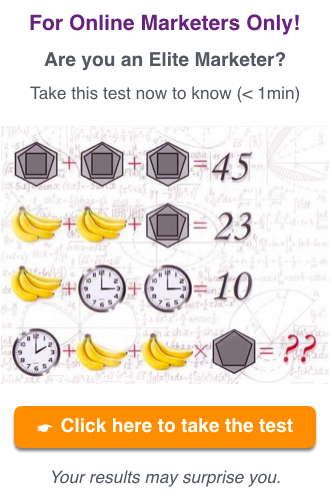 Let’s cut down to the to the chase. You took the Elite Marketer test.
Let’s cut down to the to the chase. You took the Elite Marketer test.
The questions you may ask yourself are “Did I get it right?” and also “Why did I take it?” given that you have probably 1000 other solicitations (if you hadn’t take in, you would not see this page 🙂 ).
And how did I actually influence your decisions and your results of the test?
On this page you will learn:
- Why did you take action and took the test, despite the fact that your time is probably extremely valuable,
- Why you probably got it wrong (as >85% of participants do), and
- What are the correct results?
And… most importantly:
How can you, as an elite marketer, significantly increase your conversions by applying what you learned through this process?
Continue reading, because I will show you an extremely easy way to apply much of what you learned to your website in minutes!
1. Why did you take the test?
Well, you took the test, if not you wouldn’t be on this page. Actually, I enticed you to take the test.
So what are the most likely reasons that you took it? Let’s have a look.
1.1 Exclusivity: People want stuff that is not for everybody (or hard to get)
The title of the banner of the test is: “For Online Marketers Only”, and subsequently you have to confirm that you are actually an Online Marketer by clicking a button.

If you are not an online Marketer, we are not inviting you to take the quiz!
Implicitly we are telling you: This quiz is exclusive. It’s only for a small group of special people.
The impact of exclusivity on human beings is closely linked the Scarcity Principle.
The Scarcity Principle says that something becomes more valuable the rarer, exclusive or more unattainable it is.
This elusive value triggers a sense of urgency and curiosity and makes us want to know exactly what it is that we are missing out on. These emotions drive many people to wake up at 6 am to pre-order the latest Apple iphone or to line up in zero-degree weather on Black Friday.
It’s these emotions that most likely contributed to make you convert and click-through to take the test.
1.2. In Group Bias
By the way the quiz is presented, “For Online Marketers Only!“, followed by “Are you an Elite Marketer?“, I am implicitly creating an In-group, the Elite Marketers, and an Out-group, the Online Marketers in general.
It is like I am asking: Are you an Elite Marketer or “just” an “average” Online Marketer?
In-group bias refers to a preference for one’s in-group, i.e., a social group with which the person readily associates himself, over the out-group, a social group the person does not identify with. Simply put, it refers to favoritism toward one’s own group. In a way it’s like the Apple users vs the others, it’s Us vs Them.
According to the research behind this bias, such behavior can be attributed to circumstances, wherein groups feel the need to prove their superiority or to competition, wherein two groups vie for limited resources.
And it’s this need to prove superiority, that I have been using here to make the reader want to take the test!
It is reiterated, in the social proof element that you find immediately once you click the banner to take the test:
“Already more than 2880 Elite Marketers did it (took the test)!”
Once more, I entice the reader to want to become part of the “In-group” and therefor to take action and take the test.
1.3. Social Proof
When Jeff Bezos first began letting customers post reviews of products on Amazon in 1995, many people thought Bezos had lost its marbles.
During the years that followed, almost every reputable retailer copied what Amazon has been doing first. Social Proof Marketing was born on the net.
It is today one of the most powerful persuasion tools in every marketer’s toolkit.
How did I use it here?
“Already more than 2880 Elite Marketers did it!”
This is pretty straight forward.
1.4. Fear of Missing Out (FOMO)
He was the first Psychologist being awarded the Nobel Prize in Economics. It was the 10th of December 2002 in the Stockholm Concert Hall in Sweden.
 Daniel Kahneman, together with Amos Tversky, did not only demonstrate the impact of Framing on our decisions (see 2.2.), but also did groundbreaking research on how Loss Aversion affects our decisions.
Daniel Kahneman, together with Amos Tversky, did not only demonstrate the impact of Framing on our decisions (see 2.2.), but also did groundbreaking research on how Loss Aversion affects our decisions.
Kahneman and Tversky demonstrated that the perceived pain from a loss (of a specific amount of money) is twice as strong than the feeling of joy perceived from gaining the same amount of money.
 This loss aversion is closely linked to what is called Fear of Missing out (FOMO). In psychological terms, FOMO describes the anxiety we feel when we are excluded from a social occasion, new experience or important event.
This loss aversion is closely linked to what is called Fear of Missing out (FOMO). In psychological terms, FOMO describes the anxiety we feel when we are excluded from a social occasion, new experience or important event.
How has FOMO been used in the test:
By adding “Available for a limited time only” just after the Social Proof element described in 1.3.
1.5. Mystery
Nature abhors a vacuum . This was first attributed to Aristotle, but the law is universal. And we know it.
. This was first attributed to Aristotle, but the law is universal. And we know it.
Where there is nothing, we want something.
Where there is a surprise, we want to get it.
And where there is a question … we want an answer.
More accurately, we can’t stand not to have an answer.
It is the magic of mystery. We have to have resolution.
How does the story end? What toy is at the bottom of my cereal box? What is the surprise? It makes us physically uncomfortable not to know.
Successful examples are abound. Here just one of them:
During 40 years, Cracker Jack marketed its popcorn, peanuts and molasses to adults. Then in 1912, they shifted their focus to kids and started putting small toy prizes in every box. Sales went through the roof. Not because people suddenly loved the product. But the kids couldn’t wait to uncover their toy.
So how did I use the Power of Mystery for the test?
First, this type of test is going against any conventional thinking for an online marketer. You might have thought:
What the hell does this problem have to do with online marketing???
And you want to know!
Second, below the CTA is written: Your results may surprise you.
Once more I am creating a mystery and curiosity here. We want surprises!
So now let’s move on and see how I increased the likelihood that you got the test wrong.
2. Why did you get it probably wrong?
Let me reassure you: If you got it wrong, it’s not your fault.
Almost everybody gets it wrong, in particular under time pressure.
The test itself was designed so that even highly intelligent people will most likely get it wrong.
And on top of that we have been using two powerful principles (that we present in detail in our new book, Smart Persuasion) to influence your decisions:
2.1. Priming
Influencing decision-making before the decision is actually made is typically called Priming.
This can be achieved by using specific perceptual content (words, images, other content, …), either on web pages or in advertisements, to trigger certain associations and reactions with the reader, which increase the likelihood of making the desired decision.
The desired decision in our case: I wanted you not to study the equations of the test in too much detail.
How did I do it?
Before you took the test, I am telling you:
“It’s really easy.”
“And it requires just some basic math.”
Basically I am telling you: “Don’t worry, it’s a piece of cake for an (elite) marketer, just do it and move on.”
If I had primed you by saying: “Be careful, this test is really tricky” or “Think twice and check your result”, there would have been a higher chance that you get it right.
2.2. Framing
Influencing decision-making during the decision is actually made can be achieved through Framing.
Framing means to influence decision making by the way in which information is presented, thereby causing different interpretations in the mind of the reader.
An example:
Suppose I am a doctor and I diagnose that you have a brain tumor. If I tell you “You have a 10% chance that you will not survive”, then you are probably feeling very concerned.
But if I tell you that you have a brain tumor and you have a good chance of survival of 90%, and you therefore shouldn’t be too worried, you will probably feel more relieved.
The same information presented in different ways will create a different reaction.
How did I “frame” the test?
I said “You can do it easily in less than 30s” and added a countdown timer to the page where you have to click the result.
Basically I am framing it by indicating “It’s not difficult”
Both principles here, Priming and Framing, contribute that a smaller fraction of participants actually start really to think hard before coming to a solution, and therefor I increase the likelihood of wrong test results.
3. The Correct Results
Here they are!
Let’s have a look at the images (figures) and the equations:
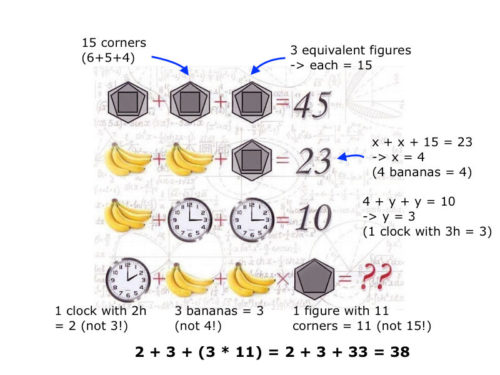
The correct result is 38, as in the last line the clock shows 2:00 (not 3:00), there are only 3 bananas per icon (not 4) and the figure contains 11 corners (not 15).
Most people take mental shortcuts when taking decisions, and therefor, based on the previous 3 equations consider the figure to be 15, the banana icon to be 4 and the clock icon to be 3 leading to a wrong result. (Some people also forget that multiplications have priority over additions).
The point here is, that in many circumstances we do not take decisions rationally, but intuitively.
And that there are many means to influence these intuitive decisions!
4. How can you apply these learnings to on your website to make your visitors take action as you did (and you can do it within minutes)?
To make things very concrete, I will demonstrate how Booking.com is applying all of these methods.
Why Booking.com?
First, because Conversion Rates are one of Booking.com’s best kept secrets. So they must be doing something right!
And their secret creates Mystery making people like me (and thousands of others) writing about them, providing free marketing and therefor creating more sales for them!
Also because Booking.com obsessively focuses on A/B testing — today, they may be the most sophisticated A/B testing company in the world, with 1,000 experiments running at any time.
One experiment forks a page into two variations, a second experiment forks those pages into four variations, a third experiment creates eight pages, and so on.
Putting that into perspective, with 1,000 experiments running at any one time, there are more versions of their website live at any moment than there are humans that have ever lived.
Let’s get started how Booking is using Priming in the Online Ads when typing “Book Hotel Paris” into Google:
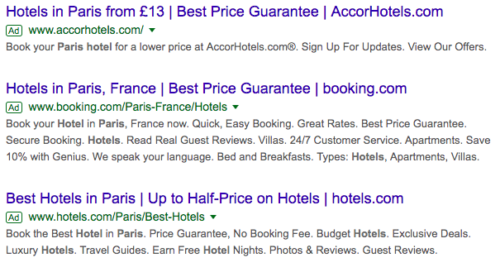
Do you observe the language?
- Best Price Guarantee:
No need to shop around. The user gets primed to best prices here (and the guarantee is detailed on the product page).
- Read Real Guest Reviews:
Many believe that reviews are sometimes fake. Booking.com primes me that I can trust them.
- 24/7 Customer Service:
Even if I am booking on a Sunday or in the middle of the night, and something goes wrong, I will always be able to reach somebody. I am primed that I can do my reservation at any time with no risk.
- Types: Hotels, Apartments, Villas:
I will even be able to find other accommodation than a hotel room. I am primed that even if I look for an apartment with kitchen, I can find it on Booking.com.
Now, once your are on the category page, there are already 4 principles used: FOMO, Social Proof, Exclusivity and In-group Bias:
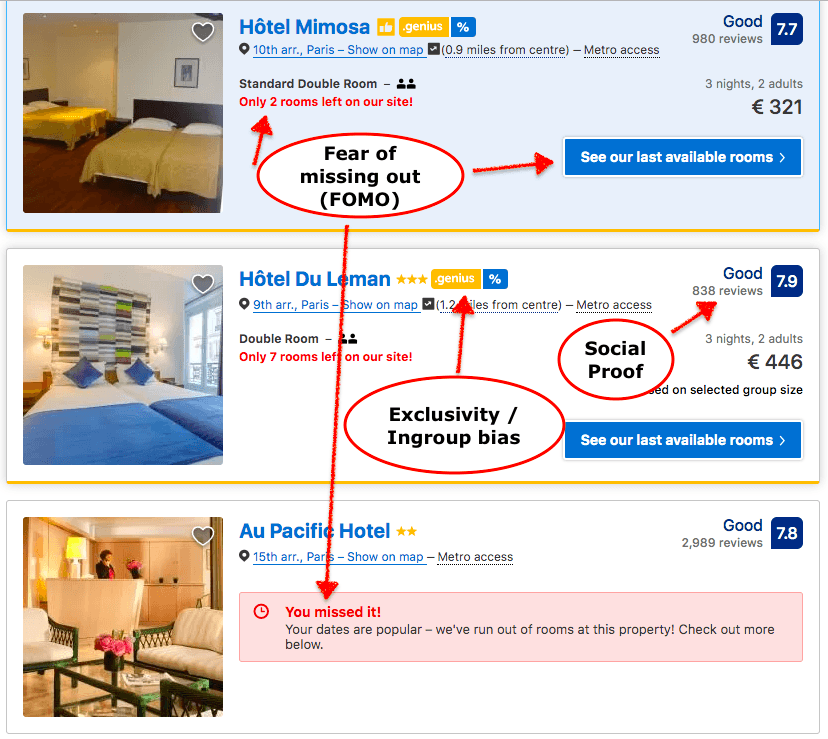
The Genius program they invented is really smart.
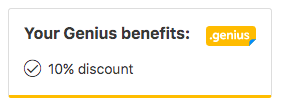 Regular Booking.com users (like me) get automatically the benefit: 10% or even 15% price reduction on many hotels!
Regular Booking.com users (like me) get automatically the benefit: 10% or even 15% price reduction on many hotels!
And Booking.com does some very smart selling of the program to their partner hotels.
So I, as a user, get the impression to belong to a privileged group and to receive exclusive offers, when actually the partner hotels provide the discounts to Booking.com.
Look how they are marketing the program to partner hotels on their website:
Genius is an exclusive program that brings partners closer to our most frequent bookers.
Joining Genius can help you get more bookings, faster. As a Genius partner, your property will get a special Genius tag, ranking boost and better visibility in search results on our website.
Your property will be displayed to a select group of customers who travel more often, book further in advance and spend more when booking.
On average, partners who join Genius increase their bookings by 18% and their revenue by 17% (even including the cost of the discount).
Now, let’s have a look at the product page of the hotel:
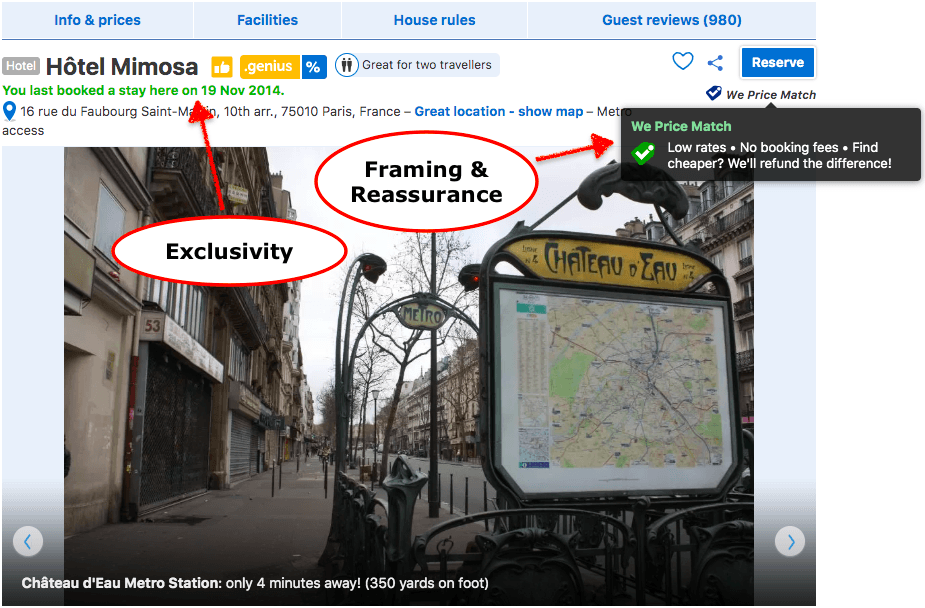
I recognize here that I have already been at this hotel in 2004. And Booking.com remembers. It’s giving once more a sentiment of Exclusivity.
It’s a bit like the owner of your favorite bakery is saying: “May I suggest you today our special multi-cereal bread? You had it regularly a couple of months ago and we have it back since today in our offering.” You are feeling privileged…
And then there is the Price Match guarantee that reassures and frames the offer.
On simply one ad and 2 different pages, Booking.com applied all the concepts that I used for the test (and many more still…).
Now, you can use these ideas to get inspiration how you can apply these principles to your website.
So what to do next?
I only scratched the surface here: There are more than 70 major – and scientifically proven – principles that influence our decisions.
Two Nobel Prices have been awarded in this field of influencing decision making and Behavioral Economics, first in 2002 to Daniel Kahneman, a Psychologist, and then in 2017 to Richard Thaler, an Economist, acclaimed author and NewYork Times Bestseller of “Nudge”
And powerful nudges are based on exactly those principles that made you take the decision to take the test and probably also to get it wrong.
Nudges can be using FOMO and Scarcity…
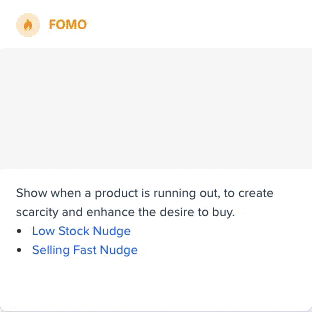
… or Urgency
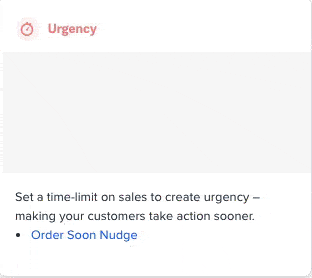
… or Reviews & Social Proof
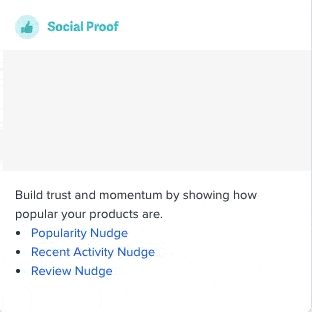
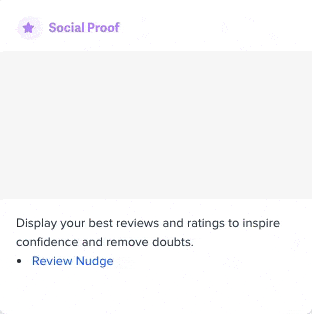
You can even create your own Custom Nudge to draw attention to key information on any page!
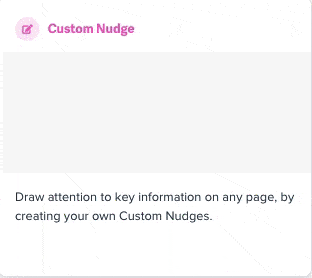
And now you can apply them to your website in minutes, without any coding know-how required and fully under your control.
And for the time being, you can start at a ridiculously small $0,99 / month!
So, if you do you want to learn how to apply them to your website to significantly increase your conversions, then choose the middle option here.
Apply Nudges to your Website Today for FREE!
Tell us what type of site you have and we show you how to apply FOMO, Urgency, Scarcity, Social Proof for YOUR site in minutes. -> 5 buttons hereunder: eCommerce, SaaS, Lead generation, Travel, Blog -> We create a specific page for each of those showing the nudges in action incl. CTA “Get nudges for my website”
eCommerceGet our latest book “Smart Persuasion – How Elite Marketers Influence Consumers (and Persuade them to take Action)” here on Amazon
It’s a bargain… for now.
It took us 3 years of research to finalise it. And you can get it for a mere $34,99 as Paperback or $7.99 as Kindle download.
And 100% of profits go to a charity: books2africa.com
